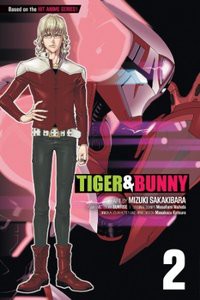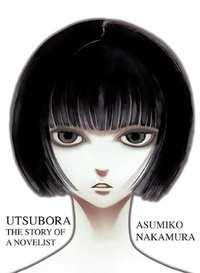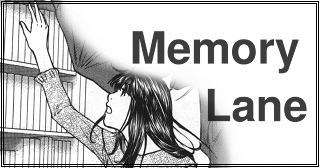RIGHT TURN ONLY!!
Tiger Tiger Burning Bright
by Carlo Santos,

The last couple of years at Anime Expo, I had noticed the declining number of manga-related panels—an indicator of how many publishers had gone out of business, or couldn't afford to send people to Los Angeles. But this year there was an uptick, with enough manga-related panels that I actually felt swamped—sitting in on Shonen Jump, Digital Manga and Vertical all within the same afternoon (and barely having enough time to write up panel reports), waking up for a first-panel-of-the-morning deal with Dark Horse and sticking around past dinnertime for Kodansha, and quietly thanking the manga gods that Yen Press decided to save themselves for Comic-Con, otherwise I might've just passed out from exhaustion.
It's been a while since the bubble burst, but I think I see the industry coming back at last. It will never again look the way it did in the mid-00's—and for the sake of sanity I hope it doesn't—but I can see manga finding its proper niche in the entertainment world.
THE DISAPPEARANCE OF NAGATO YUKI-CHAN

Vol. 4
(by Nagaru Tanigawa, PUYO and Noizi Itō, Yen Press, $12.99)
FROM THE BACK COVER:
"When Yuki is grazed by a car on her way home from school, her minor injuries belie the drastic change that has taken place within her: the 'Yuki Nagato' after the accident is not the same person as the Yuki from before. The new Yuki has all of the same memories, but they feel as if they were lived by someone else. How will Yuki's fellow club members react to their new friend? And how will Yuki respond to the lingering impressions of her feelings for Kyon...?"
EVIDENCE FOR:
This is the sweetest, most heart-achingly cute volume in The Disappearance of Nagato Yuki-chan so far. Yuki's personality shift isn't quite an amnesia plot device, nor is it a full body/mind switch, but it leads to some deeply emotional moments. The story starts to gain traction when Kyon starts hanging out with the "new" Yuki, studying with her at the library, taking her to a book fair, and basically rebuilding their relationship from scratch. Nobody makes any grand speeches about the power of love and destiny, yet when the time comes for that pivotal Kyon/Yuki moment, it just pulls at everyone's heartstrings so hard. Understatement is this volume's greatest strength—lots of wordless scenes where Kyon's and Yuki's actions say it all, and snippets of small talk that turn out to be signs of the growing love between the two. The soft-lined artwork is perfect for those quiet, everyday moments, but it still breaks out with gag humor—a goofy face here, a pratfall there—to remind us of how adorable Yuki can be. The simple paneling and scenery also makes the visuals easy to follow, giving the story a gentle, slice-of-life flow.
EVIDENCE AGAINST:
Good as this volume is, it could have been better. Yuki's mind-alteration happens right away, yet Kyon and friends argue about what to do with her for something like twenty pages. After that slow start, a lot of supporting characters drop out—a smart way to keep the story streamlined, but a disappointment for fans who would rather see the whole Haruhi ensemble join in. For most of this volume, we're stuck with Kyon and Yuki being cute together, which may demand some heavy toothbrushing afterward because of how saccharine it is. Plus, this volume doesn't fully explain why and how Yuki's memories shifted, making it seem like magic, rather than a twist of logic in true Haruhi style. The artwork could also use major improvements, starting with the lackluster backgrounds—in one scene, a drawing of a hospital is literally just lines and tilted rectangles. That kind of aesthetic, along with pasted-in screentone patterns, just looks lazy all around. The round-cheeked character designs also drift too far from the originals, looking like fanmade creations instead of an officially sanctioned work.
FINAL VERDICT:
It's hardly a perfect story arc, and the art is often lacking, but the emotions are meaningful enough to earn a B-.
I'LL GIVE IT MY ALL ... TOMORROW

Vol. 5
(by Shunju Aono, Viz Media, $12.99)
FROM THE BACK COVER:
"Sometimes you have to hit bottom before you can rise again. Shizuo Oguro (42) has done it—he's back on his feet and running full tilt toward his goal of becoming a published manga artist.
Suzuko ... Shiro ... Miyata ... Unami ... Ichinosawa ... What will become of a would-be manga master and his friends? Find out in the final chapter of I'll Give It My All... Tomorrow, dedicated to all the stars of this simpatico mid-life crisis comedy."
EVIDENCE FOR:
In most stories, old people exist either as supporting characters or comic relief. Then there's this manga, which is so refreshing because it casts an "old guy" in the leading role. Shizuo goes through a complete personal journey in this volume, all the way from utter darkness—you'll know it when you see it—to a heartwarming, redemptive finale that proves there's always hope, even for old guys with stalled careers. Along the way, the story tosses in some wry, woe-is-me humor: Shizuo keeps getting grief from his dad, he continues to muddle his way through his fast-food job, and his manga ideas are so bad they're hilarious. Eventually, the series steps up its game in the last few chapters, filling in the back-story gaps about Shizuo's daughter Suzuko and telling a poignant father-daughter tale. It's in these moments that that I'll Give It My All... goes beyond being a self-indulgent slacker fantasy, and proves that it's capable of genuine emotion. Surprisingly, even the chicken-scratch art helps to express some of that feeling, with the characters' simple but exaggerated facial expressions, and panel layouts that open up for those big, story-defining moments.
EVIDENCE AGAINST:
The artwork may have its moments, but it's still incredibly weak, requiring readers to overlook lots of gaping flaws. The visuals have no concept of perspective, they rely on basic face and hairstyle variations for character designs, the backgrounds are scribbled in without a ruler, and the shading and toning lacks any subtlety. Defenders may insist that it's different from the mainstream, but "different" doesn't mean it's good. Just imagine how much more emotion could be expressed, and how much more slice-of-life realism could be captured, if the art had any style and craftsmanship to it. And it's not like the story itself is a masterpiece, either—it relies on a lot of contrived, soap-operatic situations to create drama. There comes a certain point where it's just piling on one tragedy after another, and then turns it all around in the hokey ending, where Shizuo and company suddenly learn to accept life for what it is. (If only reality were that simple.) A drastic change of character viewpoint in the finale also seems ill-timed—possibly a last-ditch attempt to make things interesting.
FINAL VERDICT:
Not the greatest in art or storytelling, but it does reveal some meaningful emotional truths, and the refreshing middle-aged perspective adds up to a B.
TIGER & BUNNY

Vol. 2
(by Mizuki Sakakibara, planning/story by Sunrise, Viz Media, $9.99)
FROM THE BACK COVER:
"Superpowered humans known as NEXT appeared in the world 45 years ago. Some of them fight crime in the city of Stern Bild while promoting their corporate sponsors on the hit show HERO TV. The people love their superheroes, even if they don't completely understand them, and not all of the NEXT use their powers for good.
Kotetsu and Barnaby are the first NEXT superhero duo, but they've got a few differences to overcome if they're going to learn to work together. A reality TV show intruding into their daily lives doesn't help, but a bomb threat just might get them to cooperate. Then a misguided surprise party leads to a NEXT-involved diamond heist!"
EVIDENCE FOR:
Tiger and Bunny continues at a brisk pace through Volume 2, promising new adventures around every corner. (Sometimes it literally does come from around the corner, like when a jewel thief crosses paths with Kotetsu and Barnaby on the street.) The flow of tension never lets up: How can the duo meet up for dinner when someone just announced a bomb scare in the building? How are they going to celebrate Barnaby's birthday when a crook just messed up their surprise plan? There's also tension in the partnership between the two: one has to wonder if they can team up long enough to save the day, or are going to end up sabotaging themselves. The action scenes, all speedlines and explosions and powersuits flying through the sky, add to the thrill: each of the different heroes brings their own particular talents to the fight, and seeing them co-ordinate their powers—usually with flashy, visually stunning results—is part of the fun. The metropolitan setting of Stern Bild also adds variety to the artwork, as the backgrounds change constantly depending on where the heroes are in the city.
EVIDENCE AGAINST:
As Volume 2 presses on, it becomes clear that the Tiger and Bunny manga is an example of potential gone to waste. Often, the art looks stiff and copy-pasted—the character designs are accurate, but lack life, and the line widths never vary, a sure sign of too much computer assistance. The city backgrounds may be sci-fi inspired, but a lot of everyday details (interiors, windows, tables and chairs) are drawn very plainly. What's more, the heavy screentoning "grays out" a lot of the action, making it harder to read than it should be. The storyline falls back on standard hero-versus-villain escapades in this volume, making for predictable adventures every time. Sure, there's tension when it seems as if Barnaby and Kotetsu have ruined everything because of their disagreements, but good always triumphs over evil, no matter how ridiculous the circumstances. These chapters occasionally hint at Barnaby's troubled childhood, and how that plays into the story later, but the flashbacks accomplish nothing aside from leading up to a cliffhanger right at the end. Everything else so far has just been superpowered good-versus-evil fluff.
FINAL VERDICT:
Although it's still a great story concept, the episodic material in this volume and an underachieving art style result in the disappointment of a C.
UTSUBORA: THE STORY OF A NOVELIST

(by Asumiko Nakamura, Vertical, $18.95)
FROM THE BACK COVER:
"Complete in one volume, Utsubora intimates the story of a novelist who succumbs to the siren call of plagiarism when a mysterious beauty straight from his own pages accosts him unbidden. Suspenseful, intelligent, and sensual, treasured authoress Asumiko Nakamura's masterpiece to date and first work to become available in English is a rare treat for mature appreciators of the Japanese graphic novel."
EVIDENCE FOR:
If Satoshi Kon were alive today (bless his soul), he might have been interested in adapting Utsubora, a psychological mystery-drama that blurs the lines between fiction and reality. Early on, that's where all the fun is—who's telling the truth, and who's making stuff up? Does the mysterious beauty, Aki Fujino, really exist? Is the protagonist, famed author Shun Mizorogi, even a reliable narrator? Later on, more themes pop into the story, adding to the depth and drama: we learn why Mizorogi turned to plagiarism out of desperation, see how the cult of celebrity made him and destroyed him, and witness the eternal battle between self-expression and commerce. There's also plenty of sex here—not for pleasure, but as a symbol of power and manipulation between the characters. Asumiko Nakamura's delicate art is perfect for the moments that take place in the characters' heads (and between their bodies); the fusion between real-world elements and abstract lines creates a dreamy otherworld. Even the character designs make a statement about the story: Mizorogi is the old-school, traditionally dressed intellectual, while Fujino is almost unrealistically beautiful. Those little details—along with the big picture—result in a story that's provocative in many ways.
EVIDENCE AGAINST:
There are times when Utsubora gets a bit too happy with the blurring-fiction-and-reality trick. It switches between timeframes without warning (are we in a flashback? Did they skip a few months?), and doesn't always explain whether Mizorogi is imagining something or actually living it. It's one thing to create doubt in the reader's mind, but parts of this saga are genuinely just hard to follow. The network of characters is also tricky to navigate: the relationships between Mizorogi and his colleagues aren't entirely clear at the start, and the most important relationship of all—the "true" and "false" nature of Aki Fujino—is explained through oblique, head-scratching hints. Basically, if you prefer to understand what's going on, don't read this. Later on, when Mizorogi's plagiarism comes to light and he lets himself go, the story ends up swimming in High Romantic clichés about the tragic artist and lost love. It's a disappointing turn for a work that started out so unconventional and mind-bending. The art also lacks detail in everyday, real-world situations—city backgrounds and residential interiors look bland, and the characters are often limited to basic standing or sitting poses.
FINAL VERDICT:
Although the story details are kind of fuzzy in places, that's ultimately part of the appeal—trying to make sense of something so twisted and haunting. Credit this one with a B+.
WORLD WAR BLUE

Vol. 1
(by Crimson and Anastasia Shestakova, Seven Seas, $11.99)
FROM THE BACK COVER:
"In the continent of Consume, an endless war rages between bitter rivals: the Segua Kingdom and the Ninteldo Empire. Upon his dinosaur steed, the stern Emperor Marcus has led the Ninteldo Empire to near-victory. Now, with the majority of Consume under his control, Ninteldo has Segua up against the ropes.
Enter a fleet-footed lad named Gear, who seeks vengeance against Ninteldo for his brother's death. After joining Segua's Army, Gear is enlisted in the Special Forces to put his preternatural speed to good use. But will the inexperienced, impulsive youth be ready to face the realities of war?"
EVIDENCE FOR:
"The better you know the original, the more you'll enjoy the parody," goes the saying, and that's very true for World War Blue, which spoofs the classic Nintendo/Sega rivalry. The gaming references and puns range from obvious to obscure, and there's a certain sense of satisfaction in recalling trivia tidbits that relate to a name or plot point in the story. The series also makes good use of the underdog's point of view: the heroes of the Segua Kingdom are portrayed as daring revolutionaries, stepping up against a superior force and using whatever powers they have to defend their territory. These powers, it turns out, are another appealing element—super speed, puzzle-solving, marksmanship, and heightened senses are all pretty simple concepts, yet varied enough to give us a well-blended cast of characters. Seeing these powers in action is also a delight: Gear's pure speed and power is every bit as thrilling as actually playing Sonic, and the blurring effects give it that extra edge. Later on, as the story introduces other superpowered characters, the visuals become even more exuberant as arrows, explosions, and energy beams enter the picture.
EVIDENCE AGAINST:
It may be fun for old-school gaming fans, but that's about all this series has to offer. Without the gaming references, it's just another generic shonen adventure, with a tragic death that spurs the hero into action and scenes where the characters are training to get stronger. In fact, after enlisting in the Segua Army, Gear doesn't fight the Ninteldo troops even once in Volume 1—which leaves fans wondering how long it'll take to get to the good stuff. All they do in each chapter is introduce a new character, and vow to defeat Ninteldo someday in the future. Worst of all, some of the humor is in poor taste: there's a skeevy "Tetris guy" who keeps talking about filling up holes, and making lewd remarks toward the lady troops. That's not funny, that's just gross. The art, meanwhile, isn't as polished as it should be for a shonen adventure: the linework remains penciled instead of inked (a poor choice of artistic style), and all the character designs are built from standard fantasy clichés. Trying to throw speedlines and blur effects on everything doesn't fix what is fundamentally bad art.
FINAL VERDICT:
The gaming references are worth a laugh or two, but looking past that, it's obvious that the art and story shouldn't have even gotten past an editor. This one is barely worth a D.

NEW MOON

Vol. 1
(by Stephenie Meyer and Young Kim, Yen Press, $19.99)
FROM THE BACK COVER:
"For Bella Swan, there is one thing more important than life itself: Edward Cullen. But being in love with a vampire is even more dangerous than Bella ever could have imagined. Edward has already rescued Bella from the clutches of one evil vampire, but now, as their daring relationship threatens all that is near and dear to them, they realize their troubles may be just beginning..."
EVIDENCE FOR:
Twilight's ill-fated romance between Bella and Edward doesn't last very long in New Moon—instead, it's resident werewolf Jacob who gets to be the hunky leading man, giving the story a different flavor from the first book. Rather than fawning over how cool and mysterious vampires are, the first part of this volume takes readers through something more powerful: the deep, empty pain that Bella feels when Edward and his family skip town. Then comes a new wave of hope and excitement when she starts hanging out with Jacob, yet tempered by the fact that she still wonders about Edward. With all these emotions at play, and a love triangle emerging in full, the story finally starts to feel like something substantial—not just a one-way dreamy romantic fantasy. The expansion of the supernatural world, with a vampire clan war brewing and mention of a "royal family" from Italy, also suggests that Bella's troubles may run deeper yet. The richly rendered art is another strength of this adaptation, with gorgeous character designs (don't miss out on Jacob taking off his shirt!), grand views of the countryside, and montage scenes that bring Bella's roiling emotions to life.
EVIDENCE AGAINST:
The trouble with New Moon, much as in the original Twilight, is that hardly anything happens for dozens of pages. By the time Bella's life is actually in danger, there are about 15 pages left, and you start wonder what went on the entire rest of this volume. Much of the story involves Bella being with Edward, or missing Edward, or hanging out with Jacob and friends. There's this whole world of Alaskan vampires and Italian nobility and werewolf clan drama waiting to be explored, and instead Bella spends her time riding motorbikes and going to the movies? If she wants to lead an exciting life, she's got to try harder. In fact, this is a general issue with the main character—Bella doesn't have a strong goal or a battle to fight, and instead just feels sad about boys most of the time. Visually, this volume has a problem with too many decorative design elements: the text comes in serif font, with bold and italic flourishes (not a good look for comics), while narration and speech bubbles stand out too much from the art. As a result, the pages look pretty, but messy as well.
FINAL VERDICT:
The story excels at bringing out the lead character's emotional turmoil, and does so with striking art, but the lack of a concrete, engaging story is a big drawback.

THE SECRET NOTES OF LADY KANOKO

(by Ririko Tsujita, Tokyopop)
Right before Tokyopop shut down as a publisher, they were going through a minor renaissance that saw the company pick up some really great hidden-gem licenses—gems like The Secret Notes of Lady Kanoko. This makes it even more infuriating when you realize that Tokyopop ceased operations with only one volume left to go.
At first, the plot to Lady Kanoko sounds like typical schoolroom tripe: Kanoko, a self-proclaimed "objective observer," watches her other classmates in action and makes snarky notes about them in her notebook. Eventually she acts upon this knowledge, helping her peers in solving their emotional and personal crises, but going about it in cunning and unexpected ways. Oh, and she transfers schools every chapter, because everyone needs a wacky plot device!
Here's the thing, though: Kanoko isn't just an intelligent, take-charge personality, but is also intensely sarcastic. She comes from this recent strain of acid-tongued shoujo protagonists who seem outwardly twisted, but actually have good intentions. What's more, the problems she solves have actual substance to them, and can't just be wished away with "Well maybe the characters should talk to each other!" While the art relies on the usual stylized, sparkly look, it also manages some terrific close-ups of Kanoko's wickedly grinning face, and always maintains a sense of liveliness despite all the action taking place around a school environment.
Is this title viable enough to be a license worth rescuing? It's short (3 volumes all told), and has a mainstream enough plot that people can't wave it away by claiming it's "too Japanese" or "too weird." But there are still all those cheap, used copies out there ... who knows. One thing for sure: fans who already know of Lady Kanoko still long for a day when they can read, in English, the final volume of her adventures.
discuss this in the forum (6 posts) |